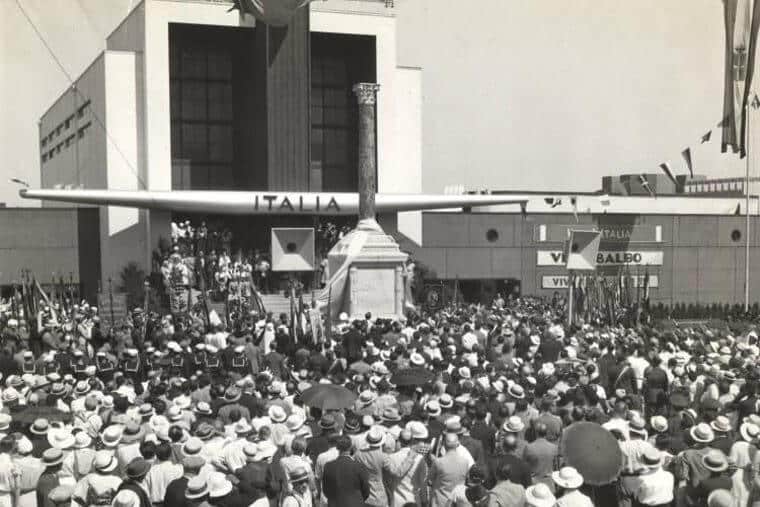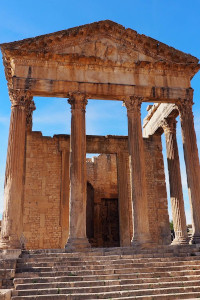
Not a Friend of ASOR yet? Sign up here to receive ANE Today in your inbox weekly!

May 2024
Vol. 12, No. 5
(Re)visiting the Past in the Present: The Power of Place and the Malleability of Monuments
By Matthew D. Howland, Morag M. Kersel, James F. Osborne, and Yorke M. Rowan
In her formative work The Power of Place: Urban Landscapes as Public History (1995), urban historian Dolores Hayden argued convincingly for the inevitable connection between the natural environment of a location and the culture which occupies that place. Our identification with distinct places and monuments is essential for the cultivation of national identities, what many refer to as geographies of identity. Rural and urban landscapes and monuments commemorating individuals or events are active rather than passive spaces, requiring contemplation and engagement, resulting in an attachment to place. In her book, Memory Lands: King Phillip’s War and the Place of Violence in the Northeast, Christine DeLucia defines the memoryscape as a “constellation of spots on the land that have accrued stories over time, transforming them from seemingly blank or neutral spaces into emotionally infused, politically potent places.” It is the notion of place and its importance as a storehouse of social memories and stories that brought together some 50+ participants, on a clear crisp November afternoon, for an unusual ASOR Annual Meeting workshop. Departing from the more traditional ASOR models, we left the building, (re)visiting the past in the present by walking from the conference hotel, through Grant Park, to the Museum Campus, the Gold Star Families Memorial, and concluding at the Balbo Monument.
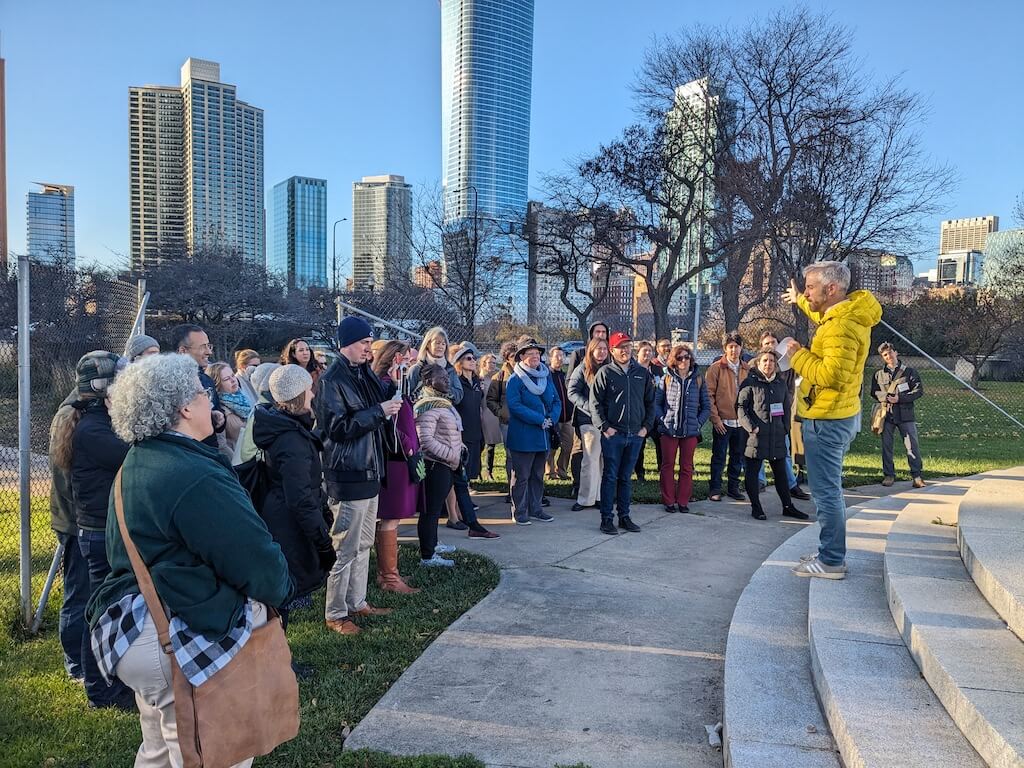
James Osborne and ASOR workshop participants in front of the empty Columbus plinth during the (Re)Visiting the Past in the Present: Monuments in Place workshop. Photo by M.M. Kersel.
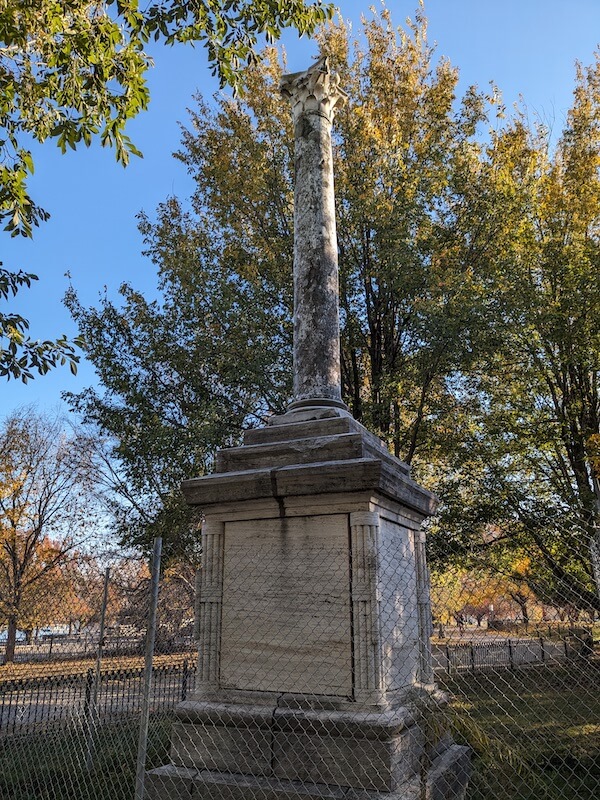
The Balbo Monument, along the Lake Front Trail Chicago. Photo by M.M. Kersel.
Places have power: the power to form collective identities, which in turn influence language, customs, beliefs, and values while creating a sense of belonging and attachment. Places serve as gathering spaces for communities, facilitating social interactions, cohesion, and collaboration. The physical environment of a place, its natural features, climate, and ecosystems can significantly impact human activities, lifestyles, and well-being. Landmarks, monuments, and architectural structures embody the power of place by celebrating achievements, ancestors, or collective aspirations. As archaeologists we are in the business of investigating ancient places, the people who interacted with them, and their associated stories. But place and more specifically monuments in places are malleable and subject to multivocal interpretation, as lawyer and cultural heritage scholar Felicia Caponigri argues persuasively. Caponigri suggests that the meanings attributed to stone structures are far less permanent than their physical form. Indeed, the ways in which these monuments speak to people depends on identity, their ever-changing cultural contexts, and the evolving nature of place.
Lessons in Power and Malleability for Ancient Landscapes
Observing changes in the meaning of monuments over time can add depth to our consideration of how people of the ancient Near East [ANE] understood and interpreted their environments. First, we know that perception of monuments must be seen as historically and culturally contingent. Many cities in the ANE —Carchemish, Tell Halaf, and Zincirli, for example — featured colossal monuments representing the king, tangible declarations of his power. After the reign of the king, these monuments were often subject to aggressive reinterpretation, including being destroyed, defaced in the face or hands, or intentionally buried. These acts of counter-monumentality may variously reflect acts of resistance against the former autocrat by disaffected groups or even reverential treatment by supporters. The discovery of a statue of King Suppiluliuma, who likely ruled at Tell Tayinat around 858 BCE, provides an excellent example of the malleability of monuments. Half of this statue is preserved and buried under a busy pedestrian walkway, which can be interpreted as either ritual humiliation or reverential treatment, given that the statue was not defaced. Interpretation of a monument’s meaning at a particular time depends heavily on who is in power, which may result in competing or splintering narratives over meaning — as is the case with the Balbo Monument.
Sitting atop the Balbo monument is an ancient Roman column, with dubious provenience, possibly from a little-known structure in the Roman port of Ostia from the 1st century BCE. What this pillar initially stood for, or supported, is unclear. On its installation in 1934 as a gift from Benito Mussolini, the Balbo Monument contrasted this ancient column with the modern sensation of Italian fascist and pilot Italo Balbo’s seaplane flight from Rome to Chicago for the Century of Progress International Exposition.
In the context of the Century of Progress, the fascist symbology and inscription linked the awe-inspiring advances in technology displayed at the World’s Fair to the authoritarian government of Italy through explicit comparison to Imperial Rome. Today, the monument’s meaning is splintered. The installation has been criticized for its fascist origins and in the wake of civil unrest following the murder of George Floyd, demands were made for its removal. Counter-demands argued for its preservation and contextualization as a warning against fascism. It has been defended as a mark of pride for Chicago’s large Italian-American community, for many of whom Balbo was living proof of their ability to achieve great things. More than anything, it has been forgotten — few Chicago residents now know the history of the monument or what it originally represented.
As Chicagoans go about their daily routines and visitors go about their site-seeing, most are unaware or unconcerned with memento mori nearby. These memorial monuments, whether for specific individuals such as Grant and Logan, or for larger collectives such as Soldier Field Memorial Landscape and the Gold Star Families Memorial and Park, remind us that arguments of socio-political analyses of the status of the dead and their current status in the present, is culturally grounded, open to contestation, and subject to reinterpretation.
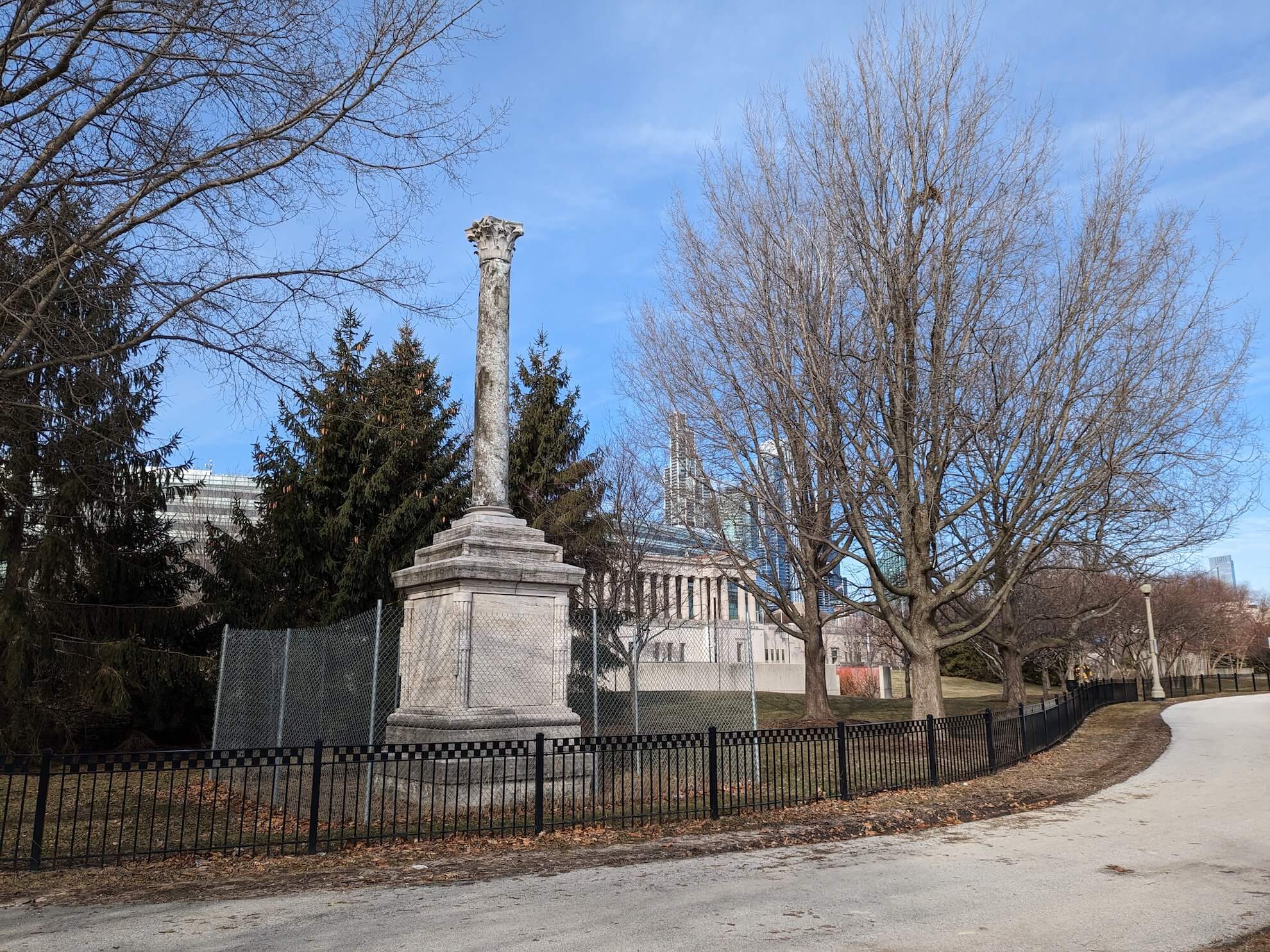
Balbo Monument in the shadow of Soldier Field, Chicago memorial landscape. Photo by M.M. Kersel.
The multivocality of monuments means that their reception is rarely uniform, as illustrated by the example of supporters and opponents of King Suppiluliuma. Their malleability means that monuments can be reappropriated, creating new meanings for new contexts, such as how key places in the second millennium BCE Anatolian landscape became defined by rock monuments, as discussed by Ömür Harmanşah. Even in prehistory we can speculate that the alteration of a monumental structure established a new meaning. In the Black Desert of Jordan, a large Neolithic structure (c. 6000 BCE) at the site of Wisad Pools was reused to create a prominent tomb during the early Iron Age, made more visible by the former Neolithic building. Just as monuments in the past could be sacralized, defaced, or re-configured, so too may our modern memorial monuments attain new status or cultural valence.
Beyond emphasis on key places, even space itself can seem to flex in response to cultural or technological context. In today’s world, where Google Maps is always at hand, it is easy to think of space in absolute terms — one could communicate to or visit any spot on the globe, if only equipped with the right tools. That was illustrated by Balbo when he made his celebrated journey — newspapers eagerly reported on the shrinking of the world through technological advancement. Yet in the past, all space was not equal – certain places were imbued with increased significance as territorial markers or waypoints, with this meaning shifting over time based on cultural context. In ancient Greece, an ordinary hilltop could be transformed from monumental tomb to forgotten place to the nexus of a hero cult used to claim land-ownership; shifts driven only by the passage of time and changes in social structure, as Anthony Snodgrass has claimed. And in the ANE, like today and in Balbo’s time, communication and transportation networks depended heavily on technology. To send a message between sites on opposite sides of Lake Sevan in Urartian Armenia, for example, might require a day’s journey, far too long in a time of war. However, ancient people effectively shrunk the landscape using an intervisible network of fire beacons. With this approach, an urgent message could be transmitted across a regional network in a matter of minutes, effectively erasing the distance between far-flung hot spots and modifying space in a moment of need.
Digital Monumentality, Landscapes of Commemoration, and ASOR
The (Re)Visiting the Past in the Present: Monuments in Place workshop at the 2023 ASOR Annual Meeting invited attendees to consider the malleability of monuments and the power of place, as influenced by cultural and social contexts while on a walking tour of sites. Workshop participants were encouraged to consider how the concept of monuments with changing meanings could apply to their own field sites in the ancient Near East. Like monuments and the landscape, this tour carried a particular intent and meaning at the time of its “construction” – we wanted to introduce ASOR attendees to this particular Chicago landscape.
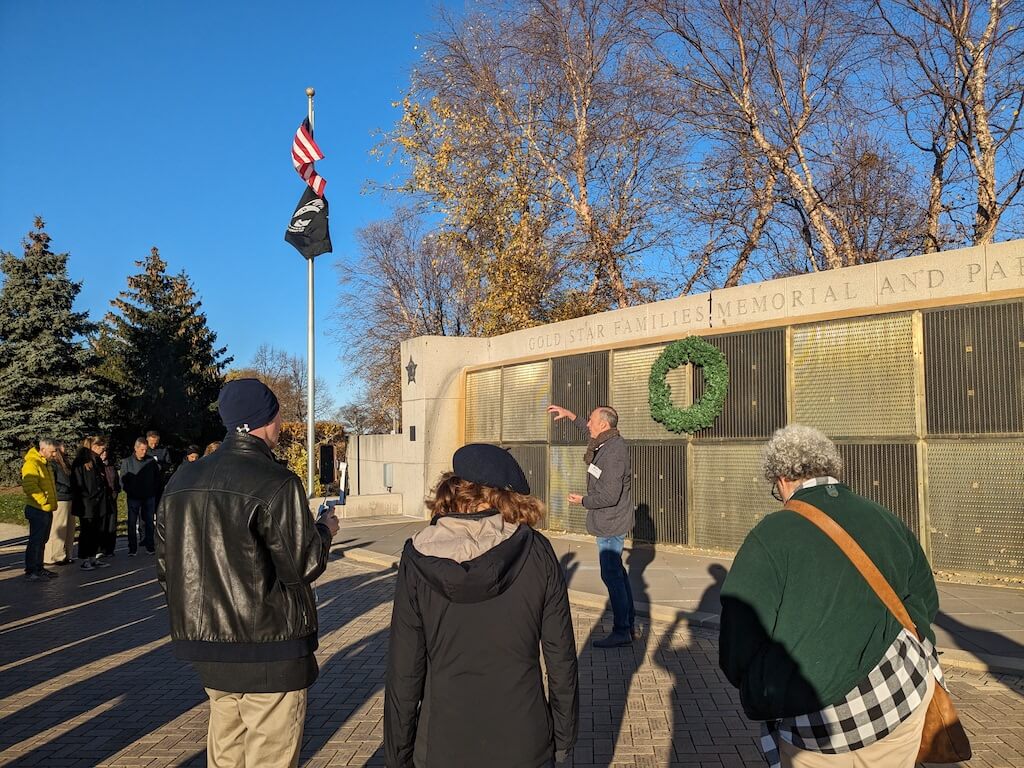
Yorke Rowan and ASOR workshop participants at the Gold Star Family Memorial, Chicago. Photo by M.M. Kersel.
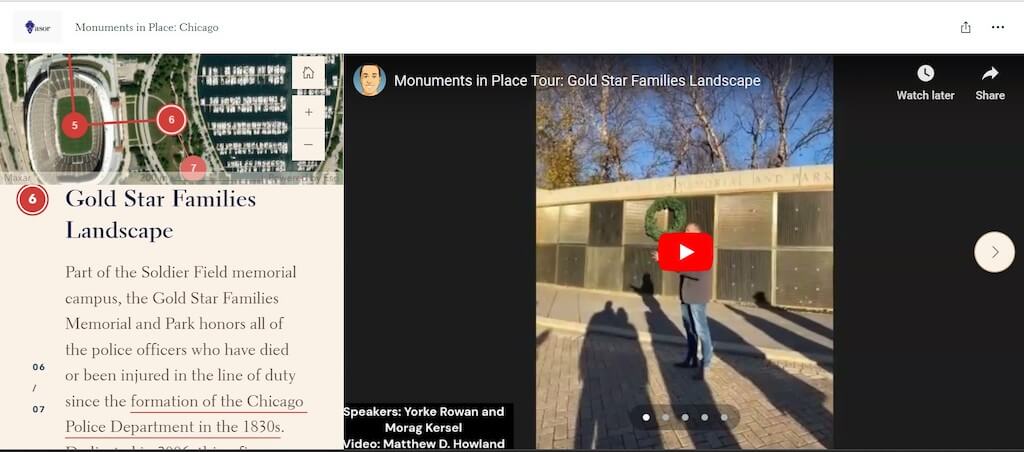
Screen capture of the StoryMap. Image by Matthew D. Howland.
Future participants, accessing the workshop through the interactive StoryMap can contemplate the power of place and the changing nature of monuments and memorials in both Chicago and within the sphere of their own work. Elsewhere, one of us has argued for how digital storytelling platforms like StoryMaps can reflect changes in society through updating of text and narrative in response to social trends or reader comments. Accessible media like StoryMaps allow us to (re)visit the past in the present, providing platforms for more nuanced debates around the dynamic and evolving interpretations of landscapes and the malleability of monuments.
Matthew D. Howland is Assistant Professor of Anthropology at Wichita State University.
Morag M. Kersel is Associate Professor of Anthropology at DePaul University.
James F. Osborne is Associate Professor of Anatolian Archaeology at the University of Chicago.
Yorke M. Rowan is Research Professor at the Institute for the Study of Ancient Cultures at the University of Chicago.
Further Reading
Caponigri, F. 2021. “Malleable Monuments and Comparative Cultural Property Law: The Balbo Monument Between the United States and Italy.” International Journal of Constitutional Law, 19 (5), 1710–1737.
Harmanşah, O. 2015. Place, Memory, and Healing: An Archaeology of Anatolian Rock Monuments. Routledge.
Osborne, J. F. 2017. “Counter-monumentality and the vulnerability of memory.” Journal of Social Archaeology, 17(2), 163-187.
Snodgrass, A.M., 1981. Archaic Greece: The Age of Experiment. University of California Press.
Thompson, E. 2022. Smashing Statues. The Rise and Fall of America’s Public Monuments. W.W. Norton & Company.
Zorach, R. 2024. Temporary Monuments. Art, Land, and America’s Racial Enterprise. The University of Chicago Press.
Want To Learn More?
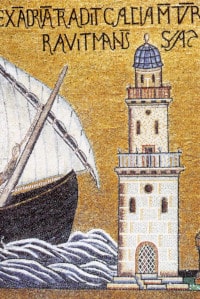 A Reverse History of the Pharos Lighthouse of Alexandria: From the Underwater Remains to the First Structure
A Reverse History of the Pharos Lighthouse of Alexandria: From the Underwater Remains to the First Structure
By Michael Denis Higgins
The Pharos Lighthouse of Alexandria was rebuilt and repaired many times over 1600 years before its final collapse. Michael Denis Higgins walks us back through time to understand its evolution. Read More
 Local Communities and Archaeological Sites: A Case Study at Dougga in Tunisia
Local Communities and Archaeological Sites: A Case Study at Dougga in Tunisia
By John Whitehouse and Sami Harize
What can we learn when we involve local communities in the study and preservation of archaeological sites? In Dougga, legends surrounding a Muslim saint have connected generations of people living there to the site’s pre-Islamic past. Read More
